Titian. Love, Desire, Death
Review of the exhibition at The National Gallery (London, The National Gallery, 16 March 2020 - 17 January 2021)
Simona Dolari
Italian full version | English abstract
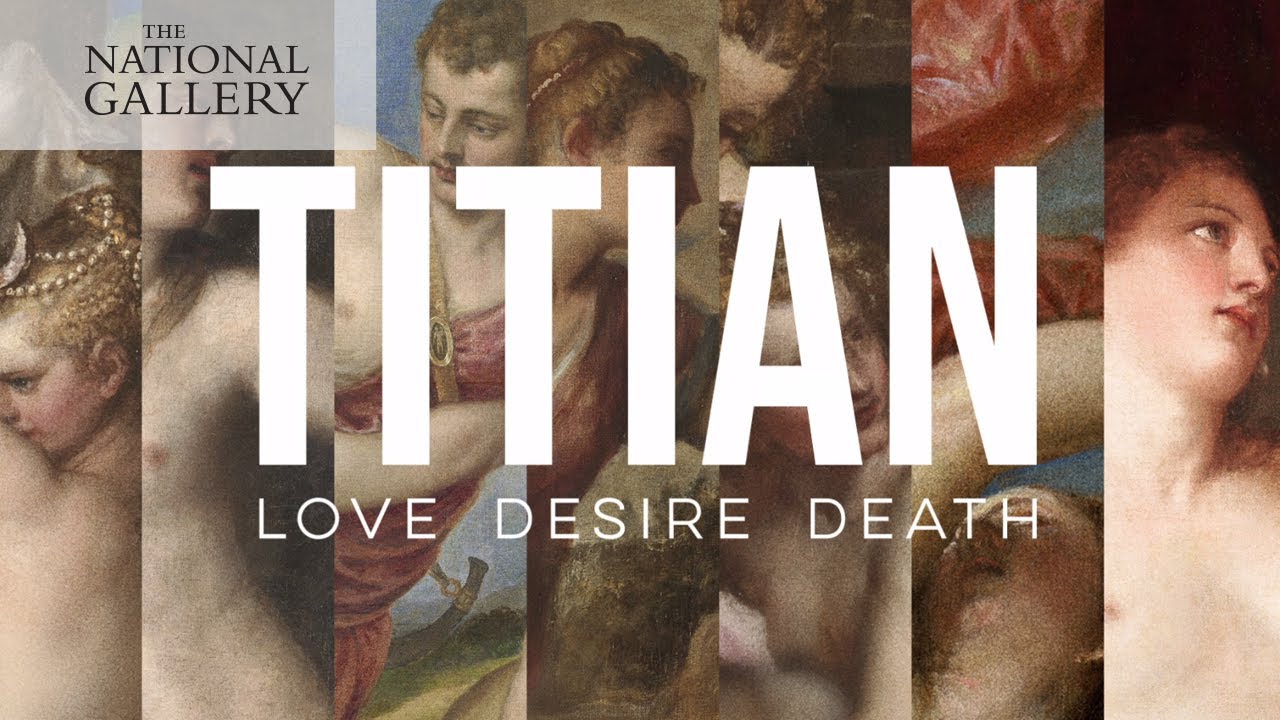
1 | Titian. Love, Desire, Death, The National Gallery of London (2020-2021).
Reunited after more than four centuries apart the wonderful poems or ‘poesie’ created by the great Titian for Philip II of Spain are on display at the National Gallery of London.
Four hundred and fifty years is a very long time, but maybe a necessary amount to finally have the privilege of seeing together once again perhaps the six most incredible, extravagant, cruel and wonderful paintings ever made in the history of Western painting. These are the six 'poems' that the portentous Titian painted for the young Philip of Habsburg, future king of Spain from 1556, during a period of eleven years from 1553, the date of delivery of the first work, The Danaë – the version exhibited here comes from the Wellington Collection in Apsley House, considered by Paul Joannides and Miguel Falomir as the most authentic if compared to the more erotic and sensual version held at the Prado Museum in Madrid – to 1562 date of the last canvas, The Rape of Europe (Isabella Stewart Gardner Museum, Boston). Alongside those works, Venus and Adonis (1554, Museo National del Prado, Madrid), Perseus and Andromeda (1556, The Wallace Collection, London), Diana and Actaeon and Diana and Callisto (1559 co-owned by the National Gallery of London and the National Galleries of Scotland, Edinburgh) and The Death of Actaeon (1559-1575, The National Gallery, London) which was never sent to the king, are the protagonists of this exhibition organised by the National Gallery of London, Titian. Love. Desire. Death (16 March 2020 - 17 January 2021).
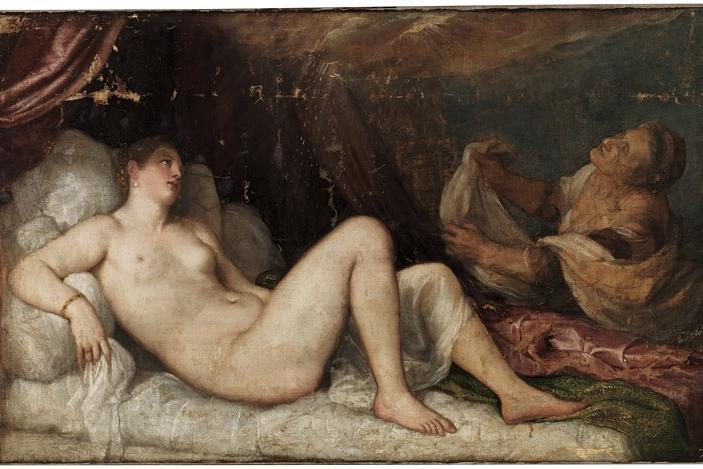
2 | Tiziano Vecellio, Danaë, 1551-1553, oil on canvas, London The Wellington Collection, Apsley House.
It seems almost unreal: the seven canvases representing mythological subjects mostly based on stories from Ovid's Metamorphoses, together in sequence, narrating complex and tragic events and engaging the viewer in a multisensory and poly-semantic experience. Entering into room VI of the main gallery, where natural light offers the best conditions to enjoy the paintings and the dark red walls perfectly interact with the works of art, one realises the extraordinary scale of the undertaking: a large number of female bodies close to human scale – mostly naked or barely clothed – which follow each other in different attitudes and poses, protagonists of various and articulated stories. The ‘poesie’ are, in fact, fairy tales or figurative poems, as Titian himself called them, whose protagonists are all women, Diana, Venus, Andromeda, Danaë, Callisto, Europa and the nymphs, with the exception of Perseus, Adonis and Actaeon: the last two destined to a miserable end, the first killed by a wild boar during a hunt, the other torn to pieces by his own dogs after being transformed into a deer. Present in disguise, first as the golden shower that will impregnate Danaë and then as the gentle yet duplicitous white bull that will carry off tender-hearthed Europa – it seems almost overshadowed by what will soon happen with Brexit – is the insatiable and unstoppable Jupiter, responsible for the sad fate of his victims.
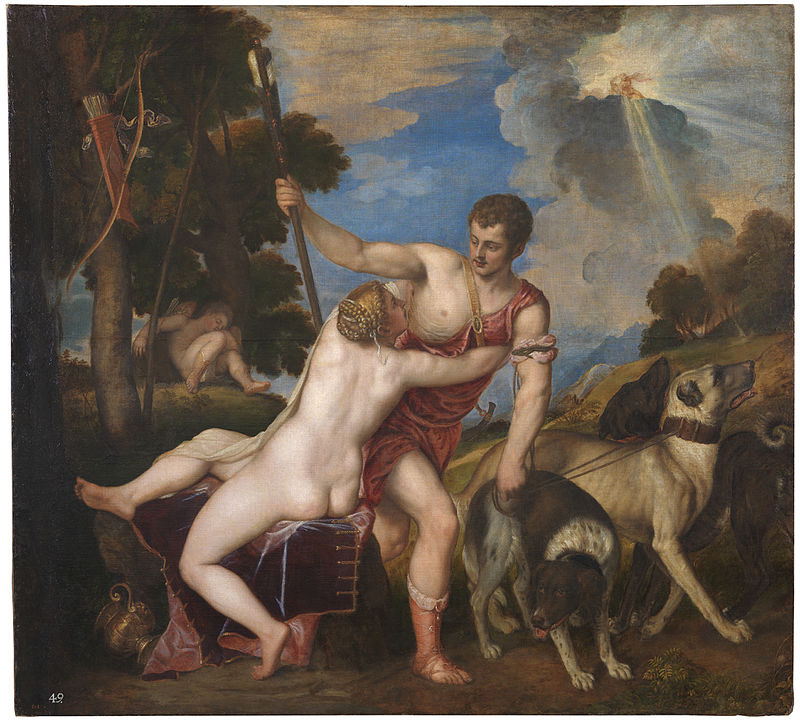
3 | Tiziano Vecellio, Venus and Adonis, 1553, oil on canvas, Madrid, The Prado Museum.
We have before us young and beautiful women, with sensual and soft bodies, seen from the front, but also from the back, lying in a bed or intent on their ablutions at a spring after a hunt or captured and borne away by a bull apparently harmless but scheming. They show differing expressions: a serene Danaë enraptured by her ‘out-of-the-ordinary visit’, the other girls incredulous, inquisitive, shocked, confused or pleading, and sometimes gratified in their awareness of the ability to decide the fate of others as in the case of Diana and perhaps also for Philip. Many of them are victims of the anger or greed of superior beings, poor Callisto was not only deceived by Jupiter who disguised himself as Diana and abused of her body, but in the scene depicted she also becomes the object of vilification of the female assembly when her body violently stripped and not nude like the other chaste nymphs, reveals her pregnancy for which she must be punished. For those who have made a mistake, there is no forgiveness even if they are victims of bullying actions acted from higher spheres or of unintentional errors such as that of Actaeon, guilty of having accidentally stumbled upon the harem of Diana and her maids.
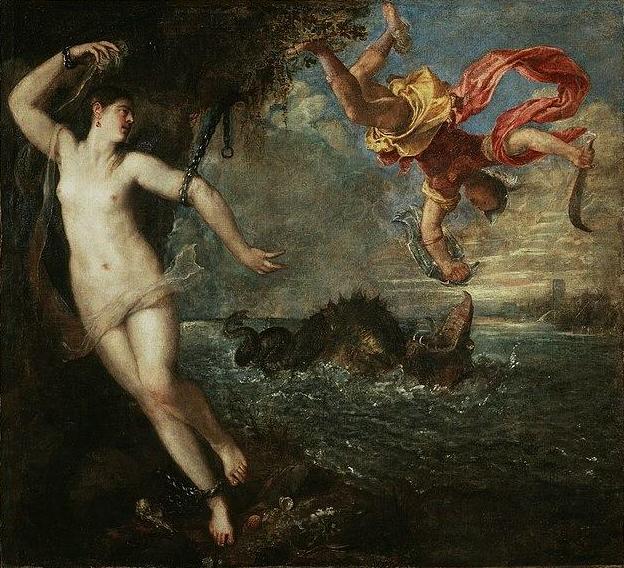
4 | Tiziano Vecellio, Perseus and Andromeda, 1554-1556, oil on canvas, London, Wallace Collection.
The understanding of these paintings is never univocal and never simplistic. This is demonstrated by the multiple interpretations published over the years by eminent scholars starting with Panofsky with his Problems in Titian. Mostly Iconographic (1969) who applied all sorts of interpretations to understand the complex iconological meaning of the entire series. The catalogue accompanying the exhibition Titian. Love. Desire. Death curated by Matthias Wivel, aims to provide an overall summary of the studies to date, presenting a vision of the works that is inclusive but not very ground-breaking.
It is clear that the works on display still today offer infinite topics for discussion and many different interpretations, especially when viewed together as conceived in the artist's mind. This was also demonstrated by the conference organised – strictly via zoom due to the pandemic – by the National Gallery, entitled “Poetry in paint: Titian's Late mythologies”, which was held over three different days in which specialists from various disciplines, from art historians to anthropologists and political scientists considered the ‘poesies’ from very different point of views. The questions we ask ourselves today are probably even more numerous than before and the answers are always varied and discordant: these paintings are masterpieces that stimulate various feelings and reactions of various kind, but never indifference.
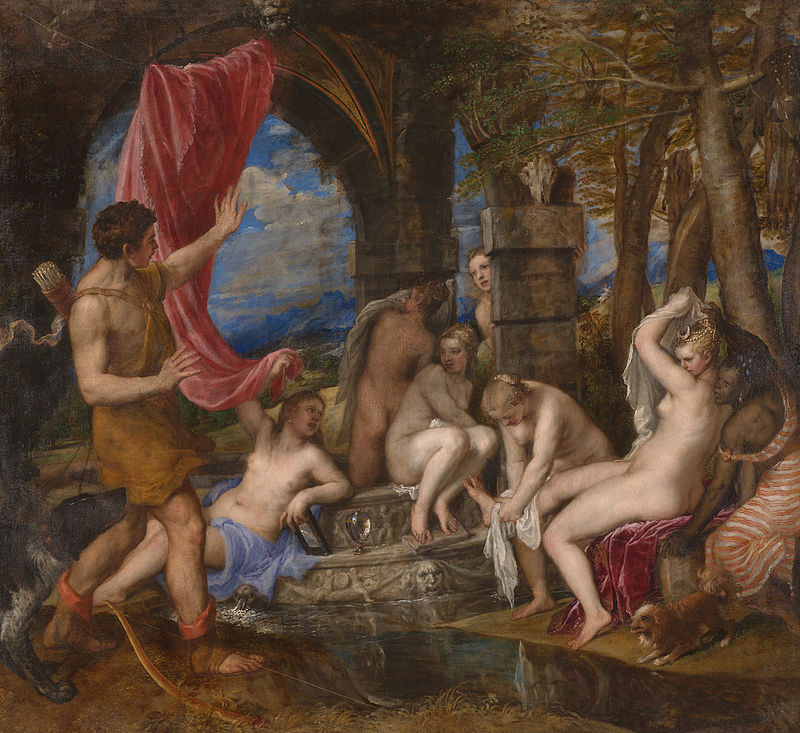
5 | Tiziano Vecellio, Diana and Actaeon, 1556-1559, oil on canvas, London and Edinburgh, National Gallery.
It is a continual journey that calls into play intellect and senses, it is a complex game in which knowledge but also sight, hearing and touch are engaged, inviting the viewer to ‘feel’ the soft and fleshy flesh as well as the spring waters in which Diana and her entourage refresh themselves. It is Titian at his best, and the culmination of an artistic career and technical research that is always in constant evolution. It is the most complex creation of a mature painter, he is in fact over sixty years old when he begins to elaborate the ‘poesie’, and he knows his patron very well having spent a long time in the young prince’s company together with the artist Leone Leoni during the “felicissimo viaje” they made in 1548 through the European possessions of Emperor Charles V.
This is the beginning of that strong artist-patron union which will continue until the painter's death in 1576 and which will lead to the creation of almost thirty works in total, with a very varied excursus in stylistic and typological terms. Titian, who for Charles V had essentially painted religious and propagandistic works in the previous decades, fully understands the political and cultural needs of the young and future ruler and he also knows his frivolities and greed as a man for hunting and for women while being gifted with a profound and serious humanistic education.
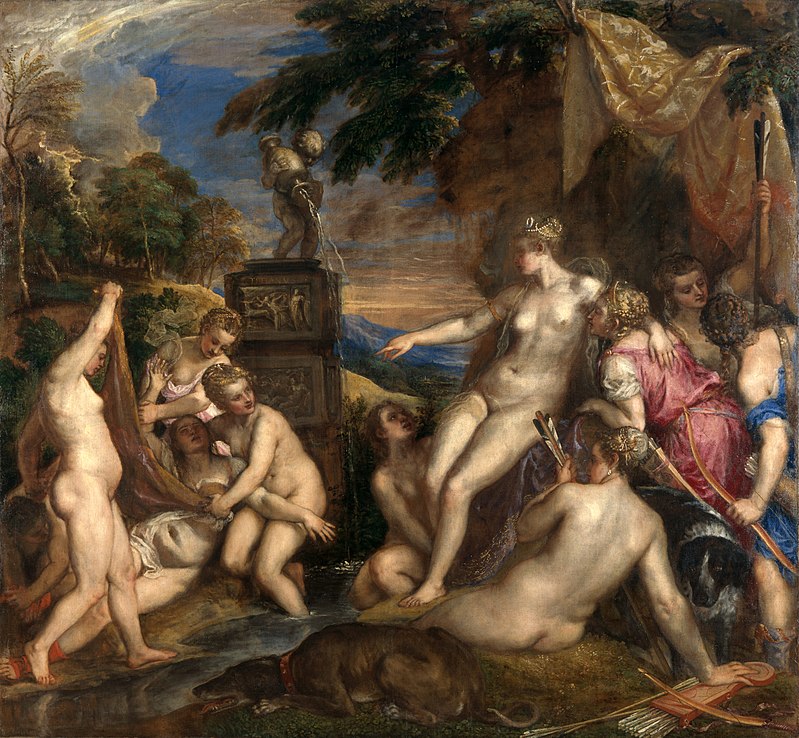
6 | Tiziano Vecellio, Diana and Callisto, 1556-1559, oil on canvas, London and Edinburgh, National Gallery.
The artist has the expertise and knowledge – the hypothesis of the unlettered painter is long gone – to be able with extraordinary freedom to ‘invent’ his ‘poesie’ that show the rich cultural and literary environment in which he moves but that are also witnesses of the different historical and contextual situations of the years in which they are created. It is clear that in the ten years between The Danaë and The Rape of Europe, without taking into consideration The Death of Actaeon – which in some way represents the culmination of this series but which was never sent to Philip even if repeatedly mentioned in the correspondence – the political and cultural situations change and with these also the mood of the painter who sees his end ever closer, fears more and more the new generation of painters active in Venice, especially Tintoretto, and complains constantly in his letters to the sovereign or his agents, about the non-payment for the works sent and for the promised pensions. Between the first and the last painting we can read the evolution of a style that becomes more and more complex and articulated in the composition of the images and in the way of working with colours that are more material and dense, while the figures become less defined to what many have erroneously surmised as “un-finished”.
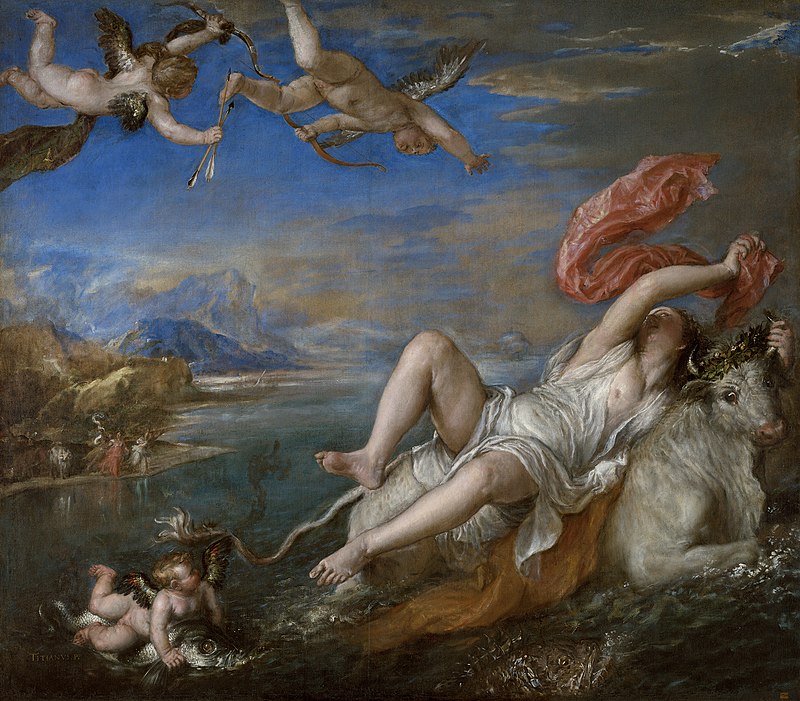
7 | Tiziano Vecellio, The Rape of Europa, 1560-1562, olio su tela, Boston, Museo Isabella Stewart-Gardner.
If in the paintings depicting The Danaë and Venus and Adonis the figures are still characterised by a thin painting with light colours and with a limited number of figures arranged in the foreground, the later paintings, in particular the two scenes with Diana, which are wonderfully displayed in the show on the same wall – in the way Titian had surely thought of them as confirmed by details such as the landscape in the background, the river in the foreground but also the direction of the light –, are almost the expression of a theatrical scene with many characters depicted on different planes and in various attitudes, but each involved in the same drama that is coming to pass. The decidedly darker colours, especially in the background, dissolve and recompose themselves thanks to a material consistency never seen before among Renaissance painters. They are tragic paintings as Puttarfaken wrote in his book Titian and Tragic Painting, highlighting the theatrical nature of the compositions, in which men and women appear victims of a hopeless and inexorable fate in which gods and fate are relentless and unstoppable executioners from which it is impossible to escape. They are pictures of rupture and also of personal crisis as Gentili wrote in his beautiful From Titian to Titian, which acts as a true testament to an entire career.
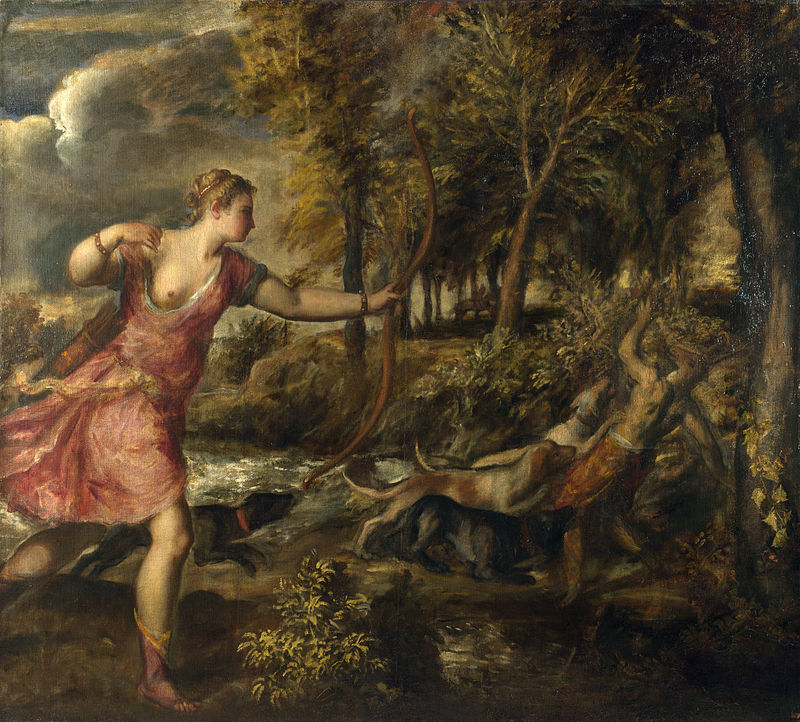
8 | Tiziano Vecellio, Death of Actaeon, 1559-1575, oil on canvas, London, National Gallery.
They are for various reasons the alter-ego of the only other mythological cycle created by the Venetian artist almost thirty years earlier between 1518 and 1525 for the ‘alabaster camerino’ of Duke Alfonso d'Este of Ferrara. Also in this case we are talking about large and complex works but elaborated following a detailed program conceived by the Duke himself with the help of the humanist Mario Equicola for an intimate and well-defined space to be dedicated to study and otium in a moment of great historical optimism for the Italian courts and for the painter himself. The three paintings in question, Homage to Venus (1518-1519, Museo del Prado, Madrid), The Bacchanal of the Andrii (1523-1525, Museo del Prado, Madrid: on the iconography see the essay of Monica Centanni in engramma n. 163), Bacchus and Ariadne (1520-1523, National Gallery, London), depict Dionysian stories in which pleasure and love are exalted as a privileged condition for those chosen, human beings and gods who know how to enjoy the power of abandonment and leisure as the god Bacchus wants. In the paintings for Philip II, Titian had no idea of the space for which they are destined, because the sovereign for years moved from residence to residence taking with him the same paintings, Apollo has taken over and the stories of love and desire become stories of tragic events that can end in death or long suffering punishment even for those who will be saved like Andromeda. The path of life for human beings, says Titian, is always complex and love no longer seems to be able to save anyone, we are now far away from Neo-platonic thought which promised a privileged condition to those enlightened by art and knowledge. Rational reason has taken over and Diana is ready to shoot her arrow at Actaeon who took the courage to part the curtain of mysteries.
Sadly, there is no trace of all the complex interpretations elaborated through theyears in the information posters throughout the exhibition, which are instead very detailed on the provenance over the centuries. Although iconology can sometimes lead us very far from reality, it is still important to attempt to understand and interpret works of art in the cultural and political context of the time in which they were created. Unique works of art such these now on display, which in a truly exceptional way have been brought together for the first time after so many years, need to be introduced and explained to reveal the complexity of their creation. Actaeon, almost unnoticed, opens the curtain and discovers a scene forbidden to mortals and for this he will pay with his life as intimated by the deer skull on the column that presages his end. However, the path to knowledge can and must be seductive and challenging and it is with this sentiment that we should continue to interrogate ourselves about the deep meaning of these paintings. The aim is to explore what lies beyond the mysteries of these works of art, which happily continue to interest a great deal number of people in spite of all those who would like to keep us the other side of the curtain.
English abstract
The text is a review of Titian. Love, Desire, Death (London, The National Gallery, 16 March 2020 - 17 January 2021), an exhibition of six 'poems' created by the Venetian painter for the young Philip of Habsburg, future king of Spain. The canvases on view are mostly based on Ovid's Metamorphoses and represent mythological subjects; they are 'poesie' (figurative poems) whose protagonists are predominantly women - Diana, Venus, Andromeda, Danaë, Callisto, Europa and the nymphs. The understanding of the paintings is never univocal, never simplistic: they represent Titian at his best, the most complex creation of a mature painter who, at sixty years old, knows his patron, and his patron's passion for women and hunting, well.
keywords | Exhibition on Titian; Titian; Ovid’s Metamorphosis; myths, Philip II of Spain.
Per citare questo articolo/ To cite this article: Titian. Love, Desire, Death. Review of the exhibition at The National Gallery (London, The National Gallery, 16 March 2020 - 17 January 2021), a cura di S. Dolari, “La Rivista di Engramma” n. 178, dicembre 2020/gennaio 2021, pp. 216-221 | PDF dell’articolo